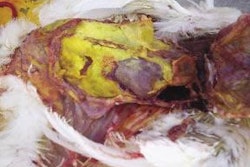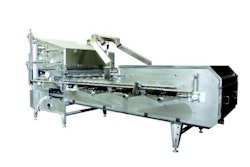Dr. Patricia Curtis is a professor at Auburn University, director of the Poultry Product Safety and Quality Peak of Excellence Program and director of the National Egg Processing Center.
Dr. Curtis received her Ph.D. at Texas A&M and was appointed to the faculty at North Carolina State University before transferring to Auburn University. She is the recipient of a Poultry Science Association Poultry Products Research Award and the Helene Cecil Leadership Award for contributions to the field of Poultry Science.
Her areas of interest include research on egg products relating to microbial safety, processing technology and functionality of egg products.
She has a special interest in food laws and regulations and has published extensively in texts, peer reviewed journals and industry periodicals.
Egg Industry: Your primary focus is the National Egg Processing Center. What are the objectives of this organization?
Pat Curtis: The National Egg Processing Center is responsible for three activities. Through our research we aim to enhance efficiency, safety and quality of shell eggs and egg products. Our outreach activities will provide educational training programs and customized workshops focused on egg-related topics. Our educational component will involve courses for agricultural college curriculums including participation in a consortium, the Great Plains Interactive Distance Education Alliance, which will provide online courses using the best faculty and specialists available.
EI: Which institutions are affiliated with the National Egg Processing Center?
PC: The Center is a partnership between scientists at seven land grant institutions, the Agriculture Research Service Egg Safety and Quality Research Unit in Athens, Ga., and the Food Safety Intervention Technologies Unit at the Eastern Regional Research Center in Wyndmoor, Penn. The NEPC operates in conjunction with an Industry Advisory Council comprising 13 active individuals representing primary breeders, egg producers, equipment manufacturers and egg processors.
EI: Please describe planned research activities by the Center.
PC: The long term research goal for the NEPC is to enhance the efficiency, safety and quality of shell eggs and egg products.
During the next two years we will evaluate the feasibility of using cold water to wash shell eggs, determine the impact of specific added ingredients on pasteurization temperature of liquid eggs and a comparison of eggs from range and traditional housed birds.
EI: You mentioned outreach and teaching as important functions of the Center. Could you please provide some examples?
PC: The Center will maintain and provide an extensive web-based technological information resource for the industry and provide a national clearinghouse and repository for advanced egg technology. We plan to provide direct education through industry-oriented short courses, webinars and seminars. We will distribute technical literature and act as a catalyst in developing partnerships among industry, government and academia.
At present the Center co-sponsors, with the American Egg Board and the National Egg Products School, a four-day workshop on the functional properties of eggs. The school is taught by 13 instructors from across the country. Scientists from the Center teach introductory and advanced HACCP training programs as well as delivering customized in-company instruction.
We are also working with the American Egg Board to create podcasts which will be available online to provide information related to egg products.
EI: What do you view as significant challenges facing the industry?
PC: The approval of Proposition 2 by the electorate of California confirms the attention devoted to animal welfare issues. The changes as mandated by Proposition 2 will impact food cost not only in California but over a wider area especially if extended to other states. Non-confined egg production is not necessarily more humane than optimal caged housing as demonstrated by production and mortality data. Food safety also remains a high priority.
It is anticipated that the long-awaited FDA regulations will be issued after the new administration is installed. The egg industry will be expected to design, implement and document food safety programs. The SQF system will be adopted by most of our industry as a way of demonstrating to our customers that we are doing all we can to produce the safest eggs possible.
Furthermore, as environmental regulations become stricter they will impose additional costs for installation and operations. It is evident that today's customers require "green" products.
EI: How will we introduce and integrate SQF systems into live bird production and processing?
PC: It would appear that the easiest way to introduce and integrate SQF systems into live bird production would be to adopt a HACCP approach, encompassing structural and operational biosecurity programs and good management practices.
As we learned in implementing HACCP programs in plants processing agricultural products, each operation has its own unique culture and infrastructure which requires a customized approach to food safety.
The SQF system provides a comprehensive structure for planning and implementing both safety and quality while requiring a program of verification and validation through internal and external audits.
EI: Where do you see our industry in five years?
PC: I am confident that the egg industry will continue to produce safe and high quality eggs and egg products. Also, there will be a coordinated progression to enhance animal welfare and environmental protection.

















